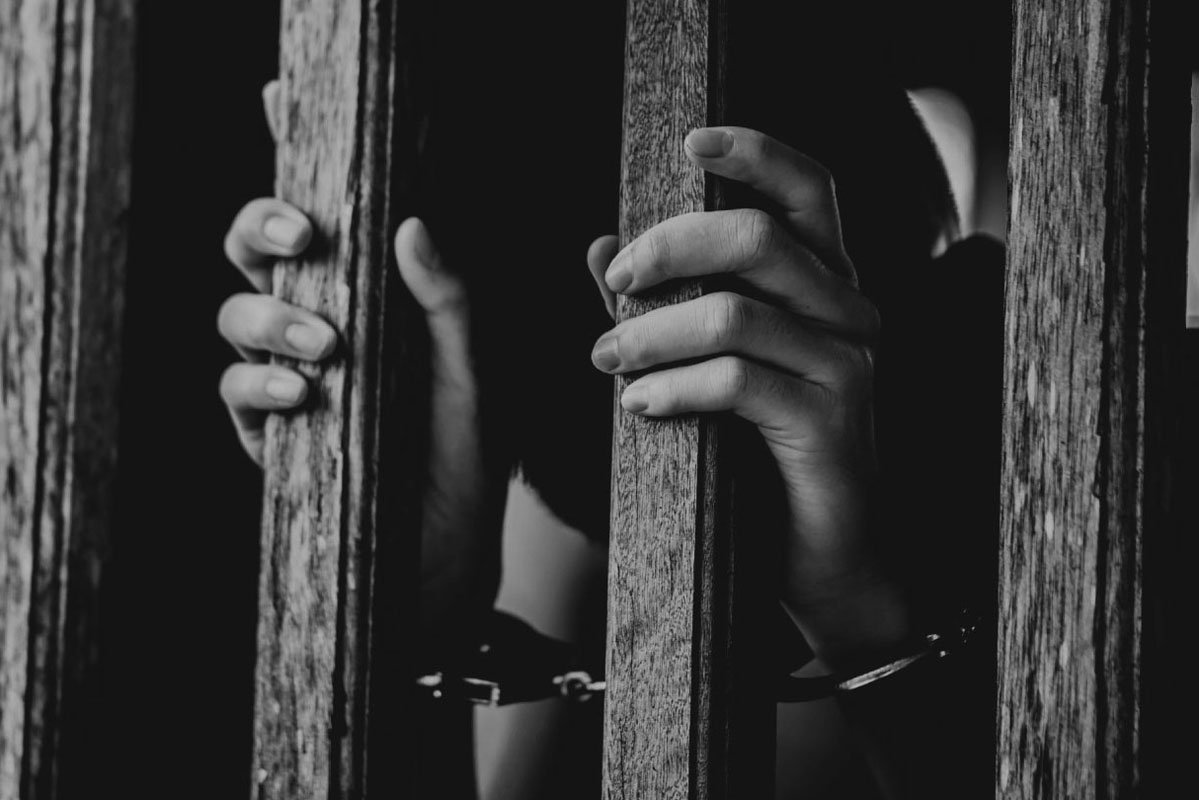Human Trafficking
January is Human Trafficking Awareness Month. Every year, advocates, organizations, and individuals unite to raise awareness about the issue of human trafficking.
According to the National Sexual Violence Resource Center, movements such as the #MeToo have started to bring crimes like sexual harassment and sexual assault out of the shadows, human trafficking largely remains hidden.
“Putting an end to human trafficking starts with acknowledging its existence.”
What is Human Trafficking?
According to the Department of Homeland Security, human trafficking is “modern-day slavery and involves the use of force, fraud, or coercion to obtain some type of labor or commercial sex act.” Human trafficking is not the same as human smuggling, which involves illegal transportation of a person across a border.
Victims of human trafficking are of all genders, ages, races, countries, socioeconomic statuses, and so on. While human trafficking can happen to anyone, people who are already in vulnerable situations – such as people experiencing homelessness – may be more likely to be targeted.
Human Trafficking Statistics
-
Nearly 1 in 5 women (18.3%) and 1 in 71 men (1.4%) in the United States have been raped at some time in their lives, including completed forced penetration, attempted forced penetration, or alcohol/drug facilitated completed penetration.
More than half (51.1%) of female victims of rape reported being raped by an intimate partner and 40.8% by an acquaintance; for male victims, more than half (52.4%) reported being raped by an acquaintance and 15.1% by a stranger.
Approximately 1 in 21 men (4.8%) reported that they were made to penetrate someone else during their lifetime; most men who were made to penetrate someone else reported that the perpetrator was either an intimate partner (44.8%) or an acquaintance (44.7%).
An estimated 13% of women and 6% of men have experienced sexual coercion in their lifetime (i.e., unwanted sexual penetration after being pressured in a nonphysical way); and 27.2% of women and 11.7% of men have experienced unwanted sexual contact.
Most female victims of completed rape (79.6%) experienced their first rape before the age of 25; 42.2% experienced their first completed rape before the age of 18 years.
More than one-quarter of male victims of completed rape (27.8%) experienced their first rape when they were 10 years of age or younger.
SOURCE: Black, M. C., Basile, K. C., Breiding, M. J., Smith, S. G., Walters, M. L., Merrick, M. T., Chen, J., & Stevens, M. R. (2011). The National Intimate Partner and Sexual Violence Survey: 2010 summary report. Centers for Disease Control and Prevention.
-
Approximately 1 in 5 (21.3% or an estimated 25.5 million) women in the U.S. reported completed or attempted rape at some point in their lifetime, including completed forced penetration, attempted forced penetration, or alcohol/drug facilitated completed penetration. About 2.6% of U.S. men (an estimated 2.8 million) experienced completed or attempted rape victimization in their lifetime.
About 1 in 14 men (7.1% or nearly 7.9 million) in the U.S. was made to penetrate someone else (attempted or completed) at some point in their lifetime.
Approximately 1 in 6 women (16.1% or an estimated 19.2 million women) and approximately 1 in 10 men (9.6% or an estimated 10.6 million men) experienced sexual coercion (e.g., being worn down by someone who repeatedly asked for sex, sexual pressure due to someone using their influence or authority) at some point in their lifetime.
A majority of female victims of completed or attempted rape first experienced such victimization early in life, with 81.3% (nearly 20.8 million victims) reporting that it first occurred prior to age 25.
The majority of male victims (70.8% or an estimated 2.0 million) of completed or attempted rape reported that their first experience occurred prior to age 25. (Smith et al., 2018, p. 2)
SOURCE: Smith, S. G., Zhang, X., Basile, K. C., Merrick, M. T., Wang, J., Kresnow, M., & Chen, J. (2018). The National Intimate Partner and Sexual Violence Survey: 2015 data brief – updated release. Centers for Disease Control and Prevention.
-
Thirty-seven (37%) of the total violent victimization experienced was identified as rape, sexual assault, robbery, or aggravated assault.
The self-reported incidence of rape or sexual assault more than doubled from 1.4 victimizations per 1,000 persons age 12 or older in 2017 to 2.7 in 2018.
Based on data from the survey, it is estimated that 734,630 people were raped (threatened, attempted, or completed) in the United States in 2018.
Despite the increase in self-reports of rape and sexual assault, there was a decrease in reporting to police from 2017 to 2018. Forty-percent (40%) of rapes and sexual assaults were reported to police in 2017, but only about 25% were reported to police in 2018.
SOURCE: Morgan, R., & Oudekerk, B. (2019). Criminal victimization, 2018 (NCJ 253043). U.S. Department of Justice,Bureau of Justice Statistics.
About C7 Human Trafficking Coalition
The C7 Human Trafficking Coalition is a 501(c)3 nonprofit group collaborating with organizations and individuals to bring awareness, education, training, and victim services to help combat sex trafficking in the North Texas region. Our members and partners work in seven counties surrounding these DFW area.
C7 Human Trafficking Coalition works to increase community awareness, and provide training and support to law enforcement, social service organizations, government organizations, churches, medical professionals, schools, and individuals.
Members of the C7 Human Trafficking Coalition work to recognize, recover, protect, restore, and advocate for victims of sex trafficking. We are a collaboration of first responders, governmental organizations, non-profits, ministries, and individuals in the North Texas region.
Find Help and Support
There is a national network of community-based rape crisis centers and local organizations who support the needs of sexual assault survivors. These centers exist across the United States to provide supportive services to victims of sexual assault. While the specific services available vary by location, services are confidential and may include:
advocacy
accompaniment during medical exams and law enforcement interviews
education
follow-up services
referrals to other resources
Every state and territory also has an organization designated to coordinate resources and represent
that state or territory as its coalition.
NSVRC maintains a directory of organizations that lists state and territory sexual assault coalitions, victim/survivor support organizations, and local communities of color sexual assault organizations. Please contact your state or territory’s coalition to find local resources that provide services to survivors.
The Rape, Abuse, & Incest National Network (RAINN) organizes the National Sexual Assault Telephone Hotline. The Hotline is a referral service that can put you in contact with your local rape crisis center. You can call the Hotline at 1-800-656-4673 or access RAINN’s online chat service.
Know Your Rights and Options
Victims of crime have rights that depend on the laws of the location (state, territory, tribe) where the crime occurred. Some of the laws that might apply to you if a person has committed the crime of sexual assault against you include:
Availability of a forensic exam (rape kit) at no cost to you
Confidential access to victim advocates
Time limits (statute of limitations) on certain legal actions
Mandated reporting of the assault if you are a vulnerable person (child or elder adult)
Confidential communication with service providers
Testing or storage of evidence kits
Possible financial compensation for you as a crime victim
Also, contact a rape crisis center in the area where you were assaulted since they should be familiar with the laws that apply in their area. RAINN maintains an excellent database of state laws that can help you to understand what rights you have.
Resources
The National Sexual Violence Resource Center has provided a list of Resources to assist with Human Trafficking Victims.
Also, please visit the NCTC Community Resources page to access more resources.
How to Help
Friends and family members of survivors of sexual violence often want to help a survivor through her or his experience but don’t know how. The A Guide for Friends and Family of Sexual Violence Survivors provide advices for friends and family about how to provide support without unintentionally increasing the stress that survivors experience, or otherwise doing harm.
Safety and Prevention
Sexual violence can be prevented. Even though harmful and inequitable histories and systems exist that normalize and condone sexual violence, things are changing. Many people are working to erase the silence and shame that keep sexual violence hidden and are working in their communities to create positive social norms and policies that promote equity and safety. You don’t have to work in the field of sexual assault prevention to make a difference. We can all help prevent sexual violence by modeling and promoting healthy and positive relationships that are based on respect, safety, and equality.
We all have the ability to positively influence others. You can help the people you care about question their harmful beliefs by speaking up if a friend makes jokes or comments about sexual assault or modeling consent with friends and family. Taking action in some way, shape, or form helps to change the thoughts and behaviors of a community.
What does this look like in real life?
Here’s an example
A friend of your family is over for dinner, and is making jokes or comments about a high-profile case of sexual assault. Their comments make it seem like it’s the victim’s fault.
In this situation, you could:
Share the information you know about sexual violence and say that it is never the victim’s fault.
Ask respectful questions about the person’s attitude. Why do they feel that way? Maybe having a discussion could change their attitude or belief.
Tell them those comments are not appreciated in your home (or in your presence) and you would like them to stop.


